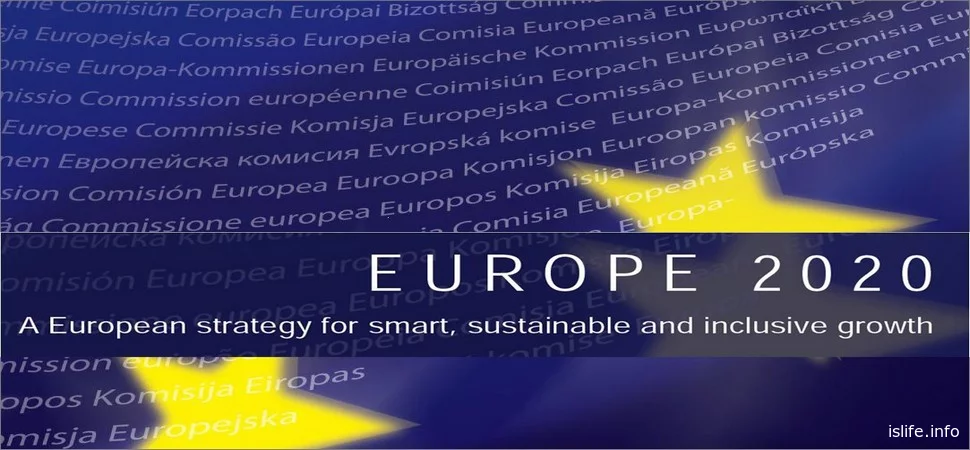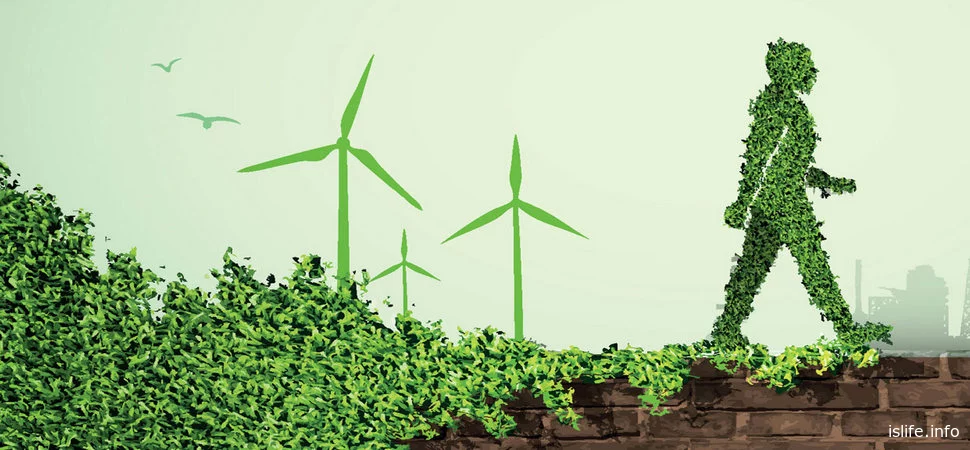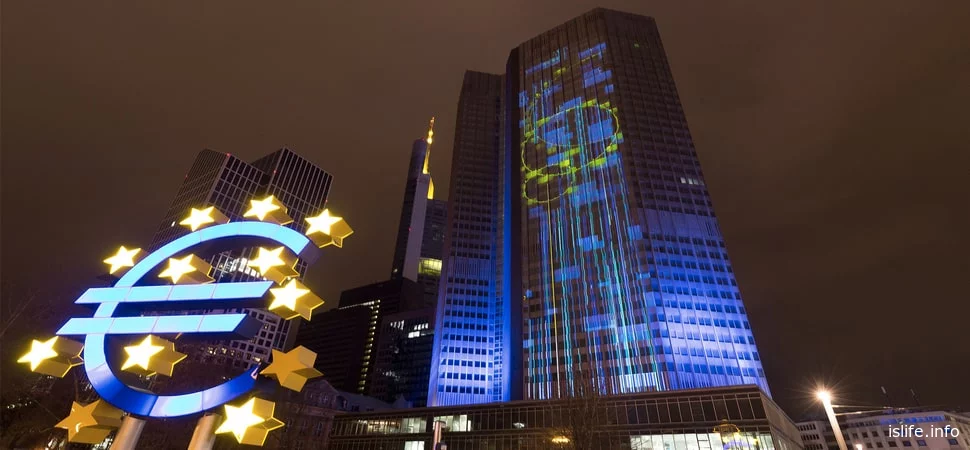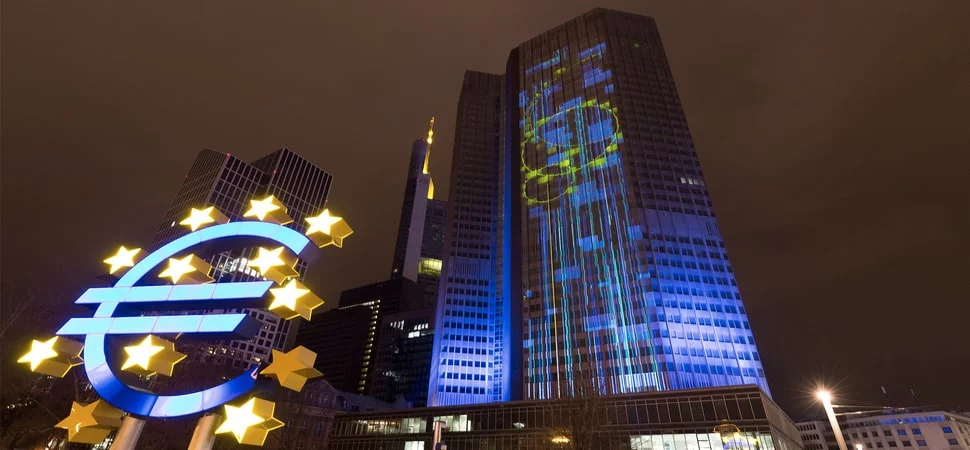The Europe 2020 strategy, adopted by the European Union in 2010, was a response to the effects of the 2008 global economic crisis, which exposed the weaknesses of the European economy. The plan was designed to strengthen the EU's competitiveness in the global arena, increase the sustainability of economic growth and create social inclusiveness.

↑ Guiding principles of the strategy
The strategy was based on three key priorities: developing a knowledge and innovation-based economy, moving towards clean and energy-efficient growth, and ensuring social cohesion through better access to employment and combating poverty.
To realize these ambitious goals, a set of measures was proposed to stimulate innovation, develop infrastructure, improve the education system and strengthen social protection. An important element of the strategy was to increase investment in research and development, which was seen as the basis for long-term growth. In addition, a key role was given to digitalization of the economy and support for small and medium-sized enterprises, which should contribute to the creation of new jobs and modernization of European production.
Special attention in the Europe 2020 strategy was paid to sustainable development. The EU set itself the task of significantly reducing greenhouse gas emissions, increasing the share of renewable energy sources and improving energy efficiency. This was part of a global drive for ecological modernization of the economy, which was an important direction not only to reduce dependence on traditional energy sources, but also to create new jobs in green sectors of the economy. Europe sought to become a world leader in climate policy by promoting the idea of the so-called green transition.
↑ Difficulties on the way to implementation
During the implementation of the Europe 2020 strategy, the EU faced a number of difficulties due to deep economic and social divisions among member states. One of the main challenges was the differences in the level of development and economic structure between Northern and Southern European countries.
Northern European countries, such as Germany and the Netherlands, were more successful at innovation and maintained high employment rates, while Southern European countries, including Greece, Italy and Spain, faced high unemployment, debt crises and weak economic dynamism. This created tensions within the EU and made it difficult to coordinate economic policies at the Union level.

The clearest example of disagreement among countries was evident in the discussion and implementation of labor reforms. While Germany successfully reformed its labor market back in the early 2000s, resulting in lower unemployment and higher productivity, other countries such as France and Italy faced strong resistance domestically.
In France in particular, mass protests and strikes have accompanied attempts to introduce reforms aimed at making labor laws more flexible. The reforms proposed by the French government were perceived by the population as a threat to social stability and the traditional system of protection of workers' rights, which caused serious political friction and slowed down the implementation of measures proposed under Europe 2020.
The economic crisis that erupted in Southern Europe in the early 2010s exacerbated these divisions. Greece, Spain and Portugal faced severe debt problems, leading to harsh austerity measures imposed by international creditors and the EU. These measures were aimed at reducing budget deficits and stabilizing the economy, but provoked sharp reactions in the societies of these countries and led to rising unemployment and social inequality. The economic situation in Southern Europe has seriously slowed down the implementation of many key initiatives of the Europe 2020 strategy, widening the gap between the successful countries of Northern Europe and the troubled regions in the South.
↑ Opinions of top politicians, media and think tanks on the results of the strategy
The assessment of the results of Europe 2020 among senior European leaders was mixed. Donald Tusk, who served as president of the European Council, noted that the strategy helped the EU cope with crisis phenomena and preserve unity, but emphasized that without deeper reforms, Europe's economy will not be able to compete on equal terms with the United States and China. He said advances in environmental policy and digitalization cannot compensate for slow innovation and weak productivity, which remain challenges for Europe.

Frans Timmermans, Vice-President of the European Commission, emphasized that Europe 2020 laid important foundations for future strategies and was an important milestone in the development of a sustainable economy. He emphasized that successes in climate change and digital transformation have proven the viability of the EU's long-term initiatives, although challenges in the social sphere, such as unemployment and poverty, require additional efforts.
From the perspective of politicians, the results of the Europe 2020 strategy were assessed mixed. Donald Tusk, who served as president of the European Council, said the strategy had helped maintain the EU's economic and political stability in the difficult years after the crisis, but warned that Europe was still losing ground to its key competitors such as the U.S. and China, especially in innovation and productivity. He emphasized that without serious reforms, it will be difficult for the EU to adapt to the challenges of the modern world and maintain a high standard of living in the long term.
Another senior official, Frans Timmermans, Vice-President of the European Commission, emphasized the successes of the strategy in environmental policy and digital transformation. He noted that the EU has managed to reduce greenhouse gas emissions and increase the share of renewable energy, an important step towards sustainable development. However, Timmermans recognized that social and employment challenges require additional efforts from all actors.
Analytical centers also provided their assessments of the strategy. A report by the European think tank Bruegel pointed out that Europe 2020 laid important foundations for long-term growth, but that the implementation of the goals related to employment and social reforms was much weaker than expected. Experts noted that economic disagreements between EU member states and the crisis in Southern Europe had seriously slowed down the pace of implementation of key targets. Nevertheless, the report stressed that the strategy was an important lesson for future programs, such as Europe 2030, which should take into account a more pragmatic approach to reforms.

↑ Opinions of major media outlets
International media also expressed their opinions on the outcome of the strategy. The Guardian, a British newspaper, pointed out in an article that Europe 2020 had become a symbol of the EU's ambitions but had failed to realize many of its key goals. The publication emphasized that Europe still remains competitive in environmental policy, but lags behind in innovation and the digital economy, especially when compared to the U.S. and China. At the same time, The Guardian noted that the strategy has helped the EU develop a holistic approach to global challenges, which could play an important role in the future.
The French newspaper Le Monde drew attention to the positive aspects of the strategy, particularly the successes in digitalizing European economies and advancing the environmental agenda. However, the article raised the issue that the lack of more aggressive labor market and social reform policies has been a major obstacle to achieving many of the Europe 2020 goals. The publication criticized the slowness of European institutions and the lack of coordination among EU countries, which, according to journalists, was the main reason for the strategy's lack of effectiveness.
↑ Conclusion
Despite the ambitious goals and the EU's desire to strengthen its position in the global economy, many key objectives were not achieved. One of the main reasons for failure was the deep socio-economic divisions between member states, especially between Northern and Southern Europe. Economic divisions, high unemployment rates and long-term debt problems in southern countries such as Greece and Spain severely hampered the implementation of intended reforms, resulting in slower growth.
In the end, Europe 2020 left an important legacy, but also demonstrated that such ambitious initiatives require more concerted efforts, flexibility in approach, and consideration of the specificities of each country. Current and future EU strategies should take into account the lessons of this period and strive to overcome internal divisions more effectively in order to successfully adapt to global challenges.


